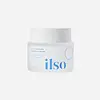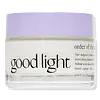What's inside
What's inside
 Key Ingredients
Key Ingredients

 Benefits
Benefits

 Concerns
Concerns

 Ingredients Side-by-side
Ingredients Side-by-side

Water
Skin ConditioningButylene Glycol
HumectantPropanediol
SolventIsotridecyl Isononanoate
EmollientPhenyl Trimethicone
Skin Conditioning1,2-Hexanediol
Skin ConditioningGlycerin
HumectantDiglycerin
HumectantSqualane
EmollientButyrospermum Parkii Butter
Skin ConditioningPolyglyceryl-3 Distearate
EmulsifyingCaprylic/Capric Triglyceride
MaskingXylitylglucoside
HumectantCetyl Alcohol
EmollientAcrylates/C10-30 Alkyl Acrylate Crosspolymer
Emulsion StabilisingArginine
MaskingAnhydroxylitol
HumectantPolyacrylate Crosspolymer-6
Emulsion StabilisingTrehalose
HumectantSodium Acrylate/Sodium Acryloyldimethyl Taurate Copolymer
Emulsion StabilisingPolyisobutene
Xylitol
HumectantHippophae Rhamnoides Water
MaskingBetula Alba Juice
AstringentCamellia Japonica Seed Oil
EmollientCeramide NP
Skin ConditioningSodium Hyaluronate
HumectantAllantoin
Skin ConditioningEctoin
Skin ConditioningHydrogenated Lecithin
EmulsifyingEthylhexylglycerin
Skin ConditioningGlyceryl Stearate Citrate
EmollientHydroxyethyl Urea
HumectantGlucose
HumectantLinoleic Acid
CleansingSorbitan Oleate
EmulsifyingCaprylyl/Capryl Glucoside
CleansingGlyceryl Acrylate/Acrylic Acid Copolymer
HumectantWater, Butylene Glycol, Propanediol, Isotridecyl Isononanoate, Phenyl Trimethicone, 1,2-Hexanediol, Glycerin, Diglycerin, Squalane, Butyrospermum Parkii Butter, Polyglyceryl-3 Distearate, Caprylic/Capric Triglyceride, Xylitylglucoside, Cetyl Alcohol, Acrylates/C10-30 Alkyl Acrylate Crosspolymer, Arginine, Anhydroxylitol, Polyacrylate Crosspolymer-6, Trehalose, Sodium Acrylate/Sodium Acryloyldimethyl Taurate Copolymer, Polyisobutene, Xylitol, Hippophae Rhamnoides Water, Betula Alba Juice, Camellia Japonica Seed Oil, Ceramide NP, Sodium Hyaluronate, Allantoin, Ectoin, Hydrogenated Lecithin, Ethylhexylglycerin, Glyceryl Stearate Citrate, Hydroxyethyl Urea, Glucose, Linoleic Acid, Sorbitan Oleate, Caprylyl/Capryl Glucoside, Glyceryl Acrylate/Acrylic Acid Copolymer
Water
Skin ConditioningGlycerin
HumectantSqualane
EmollientCaprylic/Capric Triglyceride
MaskingButylene Glycol
HumectantPropanediol
Solvent1,2-Hexanediol
Skin ConditioningCetearyl Alcohol
EmollientCaprylyl Methicone
Skin ConditioningCetearyl Olivate
Diisostearyl Malate
EmollientGlyceryl Stearate
EmollientHydrogenated Vegetable Oil
EmollientHyaluronic Acid
HumectantHydrolyzed Hyaluronic Acid
HumectantSodium Hyaluronate
HumectantPhellinus Linteus Extract
Skin ConditioningSedum Sarmentosum Extract
HumectantPolyglyceryl-6 Stearate
EmollientSorbitan Olivate
EmulsifyingPalmitic Acid
EmollientDipentaerythrityl Hexahydroxystearate/Hexastearate/Hexarosinate
Skin ConditioningVinyldimethicone
Stearic Acid
CleansingCarbomer
Emulsion StabilisingTromethamine
BufferingSorbitol
HumectantPolyglyceryl-6 Behenate
Emulsion StabilisingMyristic Acid
CleansingEthylhexylglycerin
Skin ConditioningWater, Glycerin, Squalane, Caprylic/Capric Triglyceride, Butylene Glycol, Propanediol, 1,2-Hexanediol, Cetearyl Alcohol, Caprylyl Methicone, Cetearyl Olivate, Diisostearyl Malate, Glyceryl Stearate, Hydrogenated Vegetable Oil, Hyaluronic Acid, Hydrolyzed Hyaluronic Acid, Sodium Hyaluronate, Phellinus Linteus Extract, Sedum Sarmentosum Extract, Polyglyceryl-6 Stearate, Sorbitan Olivate, Palmitic Acid, Dipentaerythrityl Hexahydroxystearate/Hexastearate/Hexarosinate, Vinyldimethicone, Stearic Acid, Carbomer, Tromethamine, Sorbitol, Polyglyceryl-6 Behenate, Myristic Acid, Ethylhexylglycerin
Ingredients Explained
These ingredients are found in both products.
Ingredients higher up in an ingredient list are typically present in a larger amount.
1,2-Hexanediol is a synthetic liquid and another multi-functional powerhouse.
It is a:
- Humectant, drawing moisture into the skin
- Emollient, helping to soften skin
- Solvent, dispersing and stabilizing formulas
- Preservative booster, enhancing the antimicrobial activity of other preservatives
Butylene Glycol (or BG) is used within cosmetic products for a few different reasons:
Overall, Butylene Glycol is a safe and well-rounded ingredient that works well with other ingredients.
Though this ingredient works well with most skin types, some people with sensitive skin may experience a reaction such as allergic rashes, closed comedones, or itchiness.
Learn more about Butylene GlycolThis ingredient is an emollient, solvent, and texture enhancer. It is considered a skin-softener by helping the skin prevent moisture loss.
It helps thicken a product's formula and makes it easier to spread by dissolving clumping compounds.
Caprylic Triglyceride is made by combining glycerin with coconut oil, forming a clear liquid.
While there is an assumption Caprylic Triglyceride can clog pores due to it being derived from coconut oil, there is no research supporting this.
Learn more about Caprylic/Capric TriglycerideEthylhexylglycerin (we can't pronounce this either) is commonly used as a preservative and skin softener. It is derived from glyceryl.
You might see Ethylhexylglycerin often paired with other preservatives such as phenoxyethanol. Ethylhexylglycerin has been found to increase the effectiveness of these other preservatives.
Glycerin is already naturally found in your skin. It helps moisturize and protect your skin.
A study from 2016 found glycerin to be more effective as a humectant than AHAs and hyaluronic acid.
As a humectant, it helps the skin stay hydrated by pulling moisture to your skin. The low molecular weight of glycerin allows it to pull moisture into the deeper layers of your skin.
Hydrated skin improves your skin barrier; Your skin barrier helps protect against irritants and bacteria.
Glycerin has also been found to have antimicrobial and antiviral properties. Due to these properties, glycerin is often used in wound and burn treatments.
In cosmetics, glycerin is usually derived from plants such as soybean or palm. However, it can also be sourced from animals, such as tallow or animal fat.
This ingredient is organic, colorless, odorless, and non-toxic.
Glycerin is the name for this ingredient in American English. British English uses Glycerol/Glycerine.
Learn more about GlycerinPropanediol is an all-star ingredient. It softens, hydrates, and smooths the skin.
It’s often used to:
Propanediol is not likely to cause sensitivity and considered safe to use. It is derived from corn or petroleum with a clear color and no scent.
Learn more about PropanediolSodium Hyaluronate is hyaluronic acid's salt form. It is commonly derived from the sodium salt of hyaluronic acid.
Like hyaluronic acid, it is great at holding water and acts as a humectant. This makes it a great skin hydrating ingredient.
Sodium Hyaluronate is naturally occurring in our bodies and is mostly found in eye fluid and joints.
These are some other common types of Hyaluronic Acid:
Learn more about Sodium HyaluronateSqualane is an emollient that helps the skin hold onto moisture. It's an oily liquid that occurs naturally in certain types of fish and plant oils.
Because squalane boosts hydration in the skin, it also comes with plenty of benefits: it is an antioxidant and can help fight free radicals and skin damage. Squalane is also found to have a detoxifying effect when applied.
Squalane comes from squalene, which occurs naturally within the sebum of our skin. It is one of the oils our skin produces to keep itself hydrated. Squalane is the hydrogenated version of squalene and has a longer shelf life.
Research shows that squalane is non-irritating (even at 100% concentration).
In general, it's a fantastic ingredient. It does a great job at hydrating the skin, and it's suitable for those with sensitive skin.
The source of squalane may impact malassezia / fungal acne. This is because olive oil derived squalane can contain impurities such as fatty acids and plant waxes. Sugarcane derived squalane is recommended for anyone with malassezia concerns.
Is squalane vegan?
This depends on the source. Squalane can be derived from both plants and animals. Most squalane used in skincare comes from plants.
Please note: the source of squalane is only known if disclosed by the brand. We recommend reaching out to the brand if you have any questions about their squalane.
Read more about squalene with an "e".
Is squalane an oil?
Squalane is often called an oil, but it’s technically not; it’s a hydrocarbon, meaning it’s only made of carbon and hydrogen, unlike true oils which are triglycerides made of fatty acids and glycerol.
The term “oil-free” isn’t regulated, so companies can define it however they want. Some exclude all oils, while others just avoid mineral oil or comedogenic oils.
While some people avoid oils thinking they cause breakouts, the right kind of oil (or oil-like ingredient like squalane) can actually help balance and hydrate your skin. It’s worth testing out simple oils or squalane to see what works best for your skin.
Learn more about SqualaneWater. It's the most common cosmetic ingredient of all. You'll usually see it at the top of ingredient lists, meaning that it makes up the largest part of the product.
So why is it so popular? Water most often acts as a solvent - this means that it helps dissolve other ingredients into the formulation.
You'll also recognize water as that liquid we all need to stay alive. If you see this, drink a glass of water. Stay hydrated!
Learn more about Water